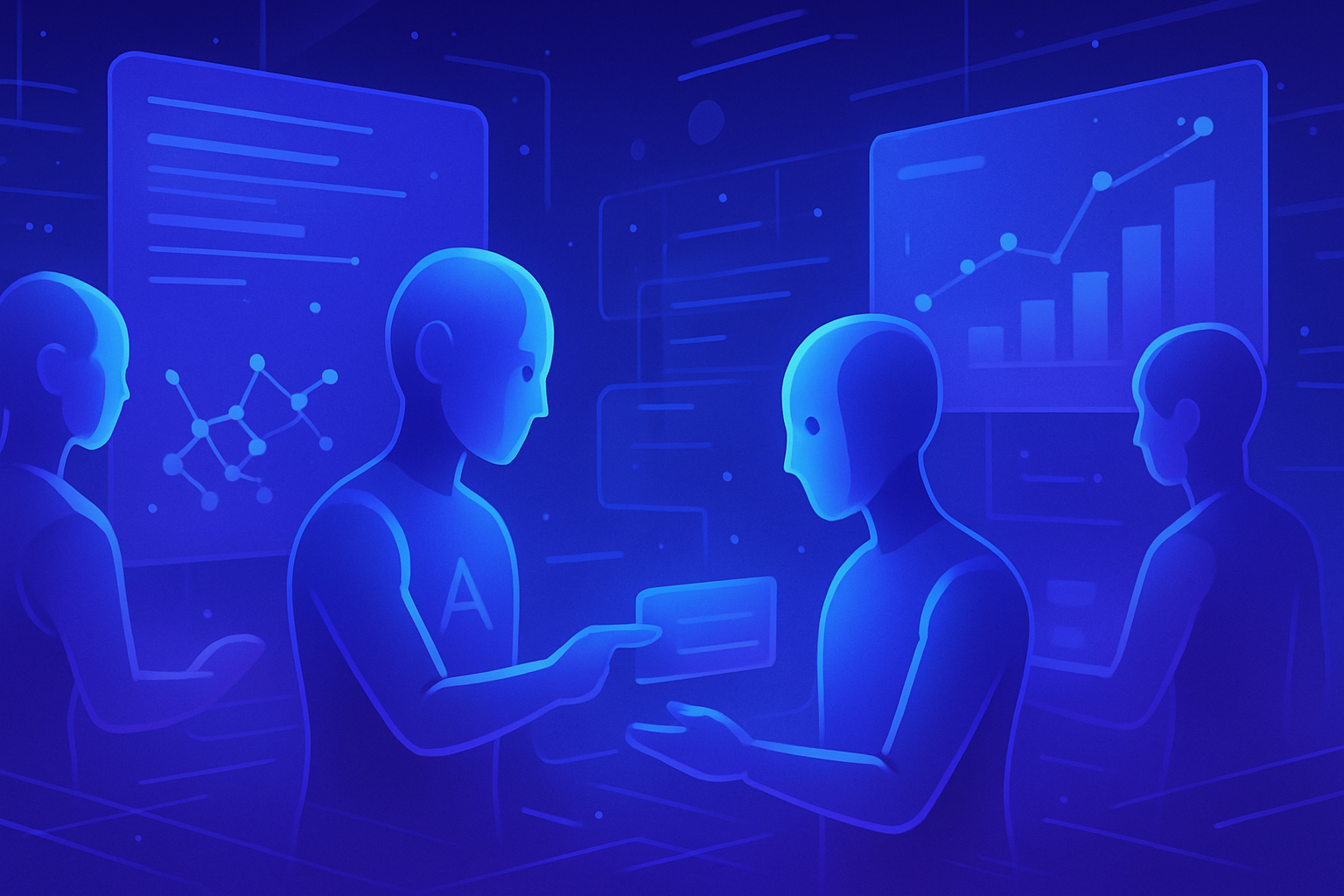AI models learn to divide tasks, significantly reducing wait times for complex queries
The complexity of modern queries demands innovative solutions to respond quickly and effectively. AI models, such as LLMs, are revolutionizing this dynamic by optimizing task management. Through unprecedented approaches, these systems provide unparalleled agility, enabling users to receive responses almost instantly. In an age of information overload, the ability to reduce wait times for complex answers becomes essential to maintain a satisfying user experience.
Revolution in complex query processing
Researchers at MIT and Google have developed an innovative method allowing language models to significantly reduce wait times for complex queries. Their recent work focuses on using a learning approach that optimizes syntax decomposition, enabling models to process multiple elements simultaneously.
The asynchronous learning paradigm
The method, referred to as PASTA (Parallel Structure Annotation), radically transforms the traditional functioning of LLM type models. Rather than adopting a sequential strategy, PASTA stimulates text generation in parallel. This strategy, based on semantic independence, allows for greater speed without compromising the quality of the generated responses.
The challenges of classical models
Conventional language models, often slow, rely on an autoregressive approach. Each element of the sequence is predicted based on the previous ones, resulting in significant latencies for more elaborate prompts. Projects have attempted to mitigate this issue through speculative decodings, but these solutions have revealed inherent limitations, particularly in terms of robustness and adaptability.
Characteristics of PASTA
Unlike previous initiatives, PASTA proves to be less rigid. This system dynamically learns to identify and decode independent text segments. The core of PASTA lies in two main elements: PASTA-LANG, an annotation language, and an interpreter that manages parallel decoding. PASTA-LANG enables a model to mark parts of its response that can be worked on simultaneously, thus optimizing the inference process.
Impacts on processing speed
Experiments conducted with PASTA have revealed significant increases in speed. The model demonstrated almost doubled response times while maintaining acceptable quality. This innovation meets a growing need for more responsive solutions, especially when users interact with complex prompts.
Pessimism towards old methods
Previous attempts, such as Skeleton-of-Thought based methods, faced notable limitations. These systems, often too rigid, struggled to seize parallelization opportunities. In contrast, PASTA’s learning approach offers valuable adaptability and scalability, essential for the future of language models.
Future perspectives
The functionalities of PASTA pave the way for broader applications of AI, especially in reducing computing costs. The decrease in any wait time for decoding could make these technologies more accessible to a multitude of applications. Researchers envision a future where these sophisticated solutions not only enhance performance but also increase the widespread adoption of advanced models.
References and additional information
For more information on recent advancements in artificial intelligence, check out the following articles: Overcoming the AI bottleneck, Netflix and generative artificial intelligence, AgentX applications on AWS, Interaction between photographers and AI in Arles, Launch of Iambard AI in Bristol.
Frequently Asked Questions
How do AI models manage to reduce wait times for complex queries?
AI models use advanced techniques like learned asynchronous decoding to structure and generate responses in parallel, allowing them to work on multiple segments of a query simultaneously, thereby reducing response times.
What is the PASTA model and what is its purpose?
The PASTA (Parallel Structure Annotation) model is designed to enable language models to generate text in parallel by identifying independent parts of the response, which significantly speeds up the decoding process.
Why do traditional AI models often take time to process complex queries?
Traditional models operate sequentially, predicting each word based on the previous ones, which leads to considerable delays when queries become more complex.
What are the implications of improved response times of AI models for users?
A reduction in response times means a better user experience, less waiting for results, and the potential to use these models in more demanding and real-time applications.
How does the learned asynchronous decoding technique work?
This technique trains AI models to recognize and process independent text segments simultaneously, rather than relying on fixed rules, thus improving their efficiency during inference.
What are the main advantages of the PASTA method compared to previous approaches?
PASTA offers a more flexible and robust approach, enabling models to identify and exploit opportunities for parallelism autonomously, without being constrained by predefined syntactical structures.
Can users expect a decrease in the quality of responses with these new methods?
No, research indicates that models using PASTA can enhance speed while maintaining or even improving the quality of responses through better learning of content structures.
What types of tasks can AI models manage more effectively with these advancements?
These models can handle more complex queries requiring elaborate responses, such as those found in fields like academic research, customer support, or recommendation systems, with increased efficiency.
Will all applications of AI models benefit from these improvements?
Yes, the enhancements brought by methods like PASTA can benefit a variety of applications, making language models more accessible and efficient for users across several different sectors.





